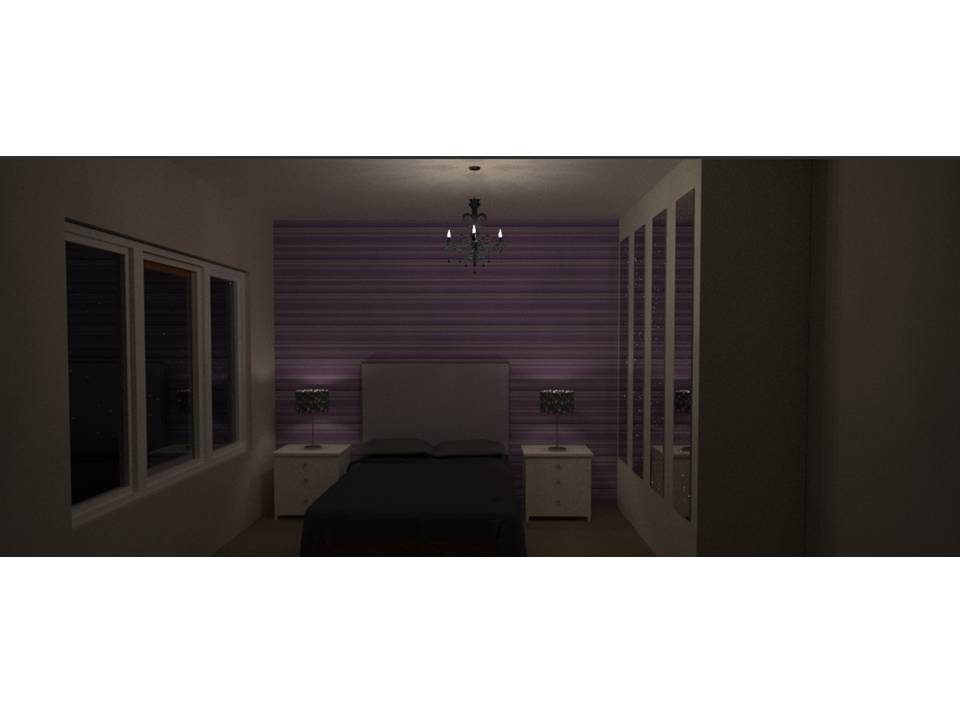White Dots on Glass/Mirror
-
Hey everyone (and Jason, because I'm quite sure wherever he is that he'll reply!! Here's hoping!),
First of all I thought it would be interesting to mention that after using the trial version of Vray that I prefer Maxwell Render. The user interface of the Maxwell Render plugin is 100 times better than Vray. I also think that the photo-realism of Maxwell Render is far superior to Vray. The only massive difference between the two rendering applications is processing time. Obviously Vray wins hands down but I'm sticking with Maxwell Render for now. I'm curious to know other forum members viewpoints on these two software applications?
I have attached a JPEG of the image I'm referring to that has white dots on the glass and mirrors. I'm assuming these are appearing because of the emitters bouncing off the reflections. The SL was only at 11 when this image was created, so I'm guessing that as the render processes those white dots will gradually minimise/disappear??
Thanks
Anita
-
Those are called fireflies, I doubt they will clear up even if you ran them for another full day. I do not use Maxwell so I cannot say what is causing them however I'd start by checking if you have intersecting lights with mesh or highly reflective materials reflecting light onto the mirror.
-
Generally noise like that is the result of unresolved caustics -- this either can be reflective or refractive caustics as the element working to resolve.
Typically I do not think of a Maxwell render as "final" until somewhere between SL 18-22 (depending on the materials used).
One thing that can cause caustics which take an incredible amount of SL to resolve is dielectric materials (true glass and water) -- which in some lighting scenarios can take up to SL 35 to clear (hardly practical)... This is the reason AGS exists.
Best,
Jason. -
Thanks Solo and Jason,
Another question: I've tried AGS on the windows and they're fine because they are a single plane. Am I able to use AGS to represent a mirror? How do I do this because it isn't a single plane - it has width to it. When I render it using AGS it is showing as grey.
Thanks
Anita -
For a mirror it is probably fastest to just use metal (silver preset)-- AGS is meant to only be used for window glazing, and real glass on a mirror will drive up rendering time considerably (and be only marginally more realistic except in close-ups).
If you find you are willing to pay the render-time costs for a more realistic "glass" mirror use a setup like the attached file.
Best,
Jason.
-
Thanks for the SU file Jason. I always use the metal preset to represent a mirror and that was the material I applied in the above JPEG, where there were loads of 'fireflies'. This is the first time that I've experienced these wee critters. I'm assuming it's because it's a fairly small space and the emitters are quite close to the reflective surfaces of the glass and mirrors. The AGS has solved the glass issue but obviously I'm still having the same problem with the mirrors. Maybe I'll reduce the reflective settings in the metal to see if it makes any difference.
Thanks for your help (as always).
Your devoted fan!!

Anita -
Do bear in mind you have created a scene where there are many more bounces to resolve than normal (by virtue of having mirrors reflecting into each other -- AGS is just a metal mirror with reduced opacity) -- this will take time to resolve and as I said SL 18 would be the minimum I would personally accept as "final".
Best,
Jason.
Advertisement







